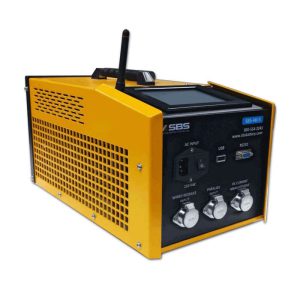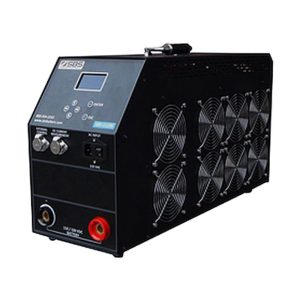If you own a battery system, you are aware of how crucial it is to frequently test it to guarantee its dependability and efficiency. Battery testing involves loading a battery and observing how it responds.
This will allow you to assess the strength and condition of your battery and spot any issues or failures. For your battery system to remain safe and effective and to avoid expensive downtime or damage, battery testing is crucial.
But not every battery tester is made equal. Battery tests come in a wide variety of models and types, each with unique features and specs.
How do you pick the most suitable battery tester for your requirements? What elements have to be taken into account when contrasting various battery testers? How can you safely and successfully use a battery tester?
We shall contrast the SBS-4815CT, SBS-2206S, and SBS-8400, three well-liked battery testers from Storage Battery Systems, in this article.
Various battery systems, including lead acid and nickel cadmium batteries, can be tested under load using these battery testers. In load testing, a battery is subjected to a load while being monitored for response.
This will allow you to assess the strength and condition of your battery and spot any issues or failures.
Let’s examine some fundamental ideas and terms associated with battery testing before we evaluate various battery testers.
When necessary, a battery transforms stored electrical energy into direct current (DC). One or more cells connected in series or parallel to produce the required voltage and current make up a battery.
The fundamental component of a battery is called a cell, which is made up of an electrolyte (a material that conducts electricity) and two electrodes (positive and negative).
The quantity of electrical energy a battery can produce under specific circumstances is its capacity. Watt-hours (Wh) or ampere-hours (Ah) are used to express the capacity.
A battery’s capacity is influenced by a number of variables, including the type and size of the cells, the battery’s age and condition, the temperature and rate of discharge, and the cut-off voltage (the lowest voltage at which the battery can function).
The ability of a battery to supply its rated capacity under typical circumstances indicates the battery’s health. A battery’s health can be impacted by a number of things, including physical harm, internal short circuits, sulfation, corrosion, overcharging, and over discharging.
By measuring a battery’s internal resistance (the resistance to current flow inside the battery) and specific gravity (the density of the electrolyte in relation to water), one can determine the condition of the battery.
A battery’s performance refers to its capacity to provide the necessary power under particular circumstances.
The load (the amount of current drawn from the battery), temperature (both the outside and internal battery temperatures), and state of charge (the battery’s percentage of available capacity) can all have an impact on a battery’s performance.
You must connect a load to a battery to test its voltage, current, and capacity. You should also keep an eye on the temperature and voltages of each cell. By doing this, you may assess the functionality and general condition of your battery and spot any issues or failures.
A battery can be subjected to a variety of loads, including resistive loads, inductive loads, capacitive loads, and electronic loads. Loads classified as resistive draw a constant current from the battery while maintaining a constant resistance.
Inductive loads consume variable current from the battery and have coils or magnets that produce an electromagnetic field. Loads with capacitors that store electrical energy and draw a pulsing current from the battery are known as capacitive loads.
Devices that replicate various forms of loads with the aid of electronic circuits are known as electronic loads.
A battery can be subjected to various load tests, including pulse tests, dynamic tests, hybrid tests, constant current tests, constant power tests, constant resistance tests, and constant power testing. A constant current load is applied to the battery during constant current tests until the battery hits a cut-off voltage.
In constant power testing, the battery is subjected to a constant power demand until a cut-off voltage is reached. Constant resistance tests involve loading the battery with a constant resistance until it hits a cut-off voltage.
Pulse testing involve exposing the battery to a series of pulses with varied current or power levels. Dynamic testing imitate real-world applications by applying a variable load with various current or power levels. Hybrid tests are those that include multiple load categories in a single test.
As an example, the NERC standard PRC-005-2 for stationary batteries used in electric power systems, the IEEE standards 450 for vented lead acid batteries, 1106 for nickel cadmium batteries, and 1188 for valve regulated lead acid batteries, as well as the IEC standards 60896 for stationary lead acid batteries, 61427 for photovoltaic energy system batteries, and 62620 for secondary lithium cells and batteries, all provide instructions on how to perform load tests on batteries.
Let’s examine three well-known battery testers from Storage Battery Systems: the SBS-4815CT, the SBS-2206S, and the SBS-8400, now that we have covered some fundamental ideas and vocabulary connected to battery testing.
The SBS-4815CT is a wireless load bank with wireless modules that can measure and record individual cell voltages during testing. It is a portable, programmable constant current load bank.
With this capability, you can quickly find damaged cells in your battery and determine how much capacity they actually have.
A sizable 5.7″ LCD touch screen on the SBS-4815CT displays real-time test data and parameters. The data can also be transferred via RS232 to a computer or USB drive for added analysis and report creation.
Because it can be powered by either a DC or an AC power supply, the SBS-4815CT is useful in a variety of settings. In order to boost the discharge current to 750 Amps, it can also be slaved with additional load banks that operate at the same voltage.
The SBS-4815CT offers a voltage range of 20–60 Vdc and a current range of 0-150 Amps, making it perfect for testing 24V and 48V battery systems. With four movable stop points and numerous alarm designs, it can carry out constant current and constant power testing.
This allows for intelligent test process control. Additionally, it can run dynamic tests and pulse tests using user-defined profiles. The NERC and IEEE standards for stationary battery testing are compatible with the SBS-4815CT.
The SBS-4815CT is incredibly portable and comes with a carrying box with wheels, making it simple to store and move around.
Additionally, it contains built-in safeguards against overheating, overloading, reverse polarity, and overvoltage.
Six wireless cell monitoring modules, computer analysis software, DC test cables, an AC power cable, RS232 wire, and an instruction manual are included with the SBS-4815CT.
A wonderful option for those looking for a wireless, programmable, and portable battery tester is the SBS-4815CT.
The SBS-2206S is the second battery tester that we shall examine. This tool, a constant current load bank, can carry out precise load tests for nickel cadmium, valve-regulated lead acid, and vented lead acid batteries.
These battery types are frequently employed in fixed applications like communications, power plants, and the oil industry.
Voltage, current, and capacity are shown in real time on the LCD panel of the SBS-2206S. Additionally, it contains built-in safety measures for overheating, overloading, and overvoltage.
The SBS-2206S offers a wide voltage range of 190-265 Vdc and a current range of 0-60 Amps, making it appropriate for evaluating the majority of stationary battery systems.
With three movable stop points based on end system voltage, discharge time, or discharge capacity, it can perform constant current testing. The SBS-2206S is capable of testing stationary batteries in accordance with IEEE standards.
With a carrying case on wheels and a 40-pound weight, the SBS-2206S is simple to move around and store.
A power cord, a user handbook, two 9-foot DC cables, and computer analysis software are all included. To measure the voltages of individual cells, however, you will need to utilize a different device since the SBS-2206S lacks wireless modules for cell monitoring.
Additionally, it might not be able to handle larger battery systems that need more than 60 Amps of current. Anyone looking for a dependable and user-friendly battery tester should consider the SBS-2206S.
The SBS-8400 is the third battery tester we’ll examine. For NERC and IEEE load testing, this device is a flexible, completely programmable constant current smart load bank with individual cell monitoring capabilities.
According to these criteria, stationary batteries must undergo routine testing to guarantee their dependability and efficiency. The SBS-8400 can test a variety of battery systems from 12V to 240V thanks to its wide voltage range of 10-300 Vdc and current range of 0-120 Amps.
Additionally, it features a wireless module connection that measures and logs the voltages of individual cells as they are being tested. You can use this capability to keep track of the condition and capacity of each battery system cell.
The 5.7″ LCD touch panel on the SBS-8400 displays test data and parameters in real-time. The test results can also be downloaded to a USB drive for later analysis and report generation or viewed on a computer via RS232.
The SBS-8400 includes numerous alarm designs and four customizable stop points to effectively handle the test process.
The SBS-8400 is a flexible instrument that can carry out various load tests on battery systems. With user-defined profiles, it can run tests with continuous current and power.
Additionally, it can carry out user-defined profiles for continuous resistance testing, pulse tests, dynamic tests, and hybrid tests. For stationary battery testing, the SBS-8400 is compatible with NERC and IEEE standards.
A high-tech option for quick, effective, and accurate load testing of battery systems is the SBS-8400.
It might be more expensive and complicated than the other two types, and it might need additional accessories to operate at its best. With a 53 lb. weight and a wheeled carrying box, the SBS-8400 is simple to move around and store.
Additionally, it contains built-in safeguards against overvoltage, overload, and overheating. A computer analysis program, DC test cords, an AC power cable, RS232 wire, and an instruction booklet are included with the SBS-8400.
The wireless modules for cell monitoring, on the other hand, are available for purchase separately and must be ordered in accordance with the quantity and kind of cells in your battery system. Anyone looking for a versatile, completely programmable, and intelligent battery tester should consider the SBS-8400.
As you can see, depending on your needs, tastes, and budget, each battery tester has pros and cons of its own. Before making a purchase, take into account your battery system’s type and size, the frequency and length of load testing, the level of accuracy and detail you require for data collection and analysis, the device’s portability and ease of use, and the availability and compatibility of accessories and software.
To obtain the greatest deal, you should also examine the costs, features, and reviews of these battery tests online or from several dealers. For additional details or technical assistance, you can also get in touch with the manufacturers or distributors.
We hope that this information will enable you to choose the best battery tester for your requirements. We will outline the key ideas in the next part and offer you some advice on how to use these battery testers safely and successfully.



